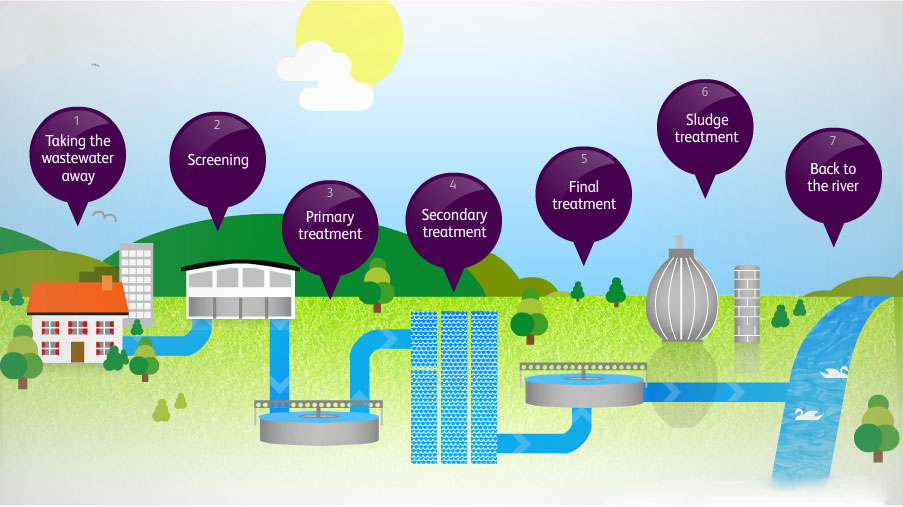What happens in a Sewage Treatment Plant?
Find out what happens to raw sewage when it leaves your home or a building…
Menu


Sewage treatment plants run sewage through multiple treatment stages. After preliminary filtration, there are three main stages of wastewater treatment (primary, secondary, and tertiary).
Preliminary Treatment
- Sewage enters the plant network, pushed through various screens to remove large solids and waste. The purpose of this stage is to filter the sewage of debris, sand, grit, and large particles.
Primary Stage
- The primary stage involves separating solids from liquids. The sewage is pumped into sedimentation tanks, where gravity forces solids to the bottom of the tank. The water is then released, leaving behind a sludge/slurry.
- The sludge is a by-product of primary treatment and can sometimes be repurposed as a fertiliser, but this requires further treatment. Incineration is the most likely destination for heavily contaminated sludge – but incineration can be a very effective energy production method.
Secondary Treatment
- Secondary treatment is the biological treatment stage that breaks down organic contaminants in wastewater. The two most frequently used processes are activated sludge (aerated ponds) and filter beds (sewage tricked over aggregate), where ‘good’ bacteria in the sludge/aggregate break down the ‘bad’ bacteria in the wastewater.
Tertiary Treatment
- Wastewater is considered clean after secondary treatment, but tertiary treatment returns it to an even higher quality for release in protected waters.
- The type of tertiary treatment depends on the wastewater. For example, should the wastewater be released into bathing or shellfish waters. In that case, it requires disinfection, and nutrients in the water, like phosphorous, must also be removed.
Types of Tertiary Treatment Include
- Microfiltration – where water passes through tiny holes at high pressure.
- Ion exchange – where ions in the water are exchanged for other ions.
- Activated carbon adsorption – the removal of organics.
- Disinfection – where UV light or chemicals kill organic pathogens leftover.
